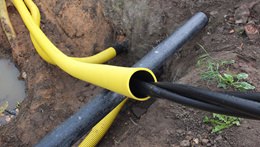
Your Sample Request
Electro-Wash MX Cleaner Degreaser
*=required field
TDS
REGS
SDS
Electro-Wash MX Cleaner Degreaser
Extra-strength, plastic safe universal cleaner with moderate evaporation time
Electro-Wash® MX Cleaner Degreaser is a high flash point cleaner that quickly removes soils, adhesives, and residues from insulation jackets and conductors on telecom, fiber optic and coaxial cables, while still being the ideal cleaner for removing oils, greases and dirt from hand tools and metal cleaning operations. Available in both a high-pressure aerosol formulation to spray areas clean and presaturated wipes to quickly wipe soils away. Excellent wetting action lifts and removes soils from the tightest areas. Electro-Wash® MX Cleaner Degreaser is also ideal for removing carbonization, oxidized oils and greases from metal surfaces.
Features & Benefits
- Safe on plastics
- Flammable
- Extra cleaning strength
- Moderate evaporation rate increases cleaning power
- Leaves no residue
- Removes organic and ionic soils
- Aerosol utilizes All-Way Spray valve; sprays in any direction
Applications
- Removes oils and hydraulic fluids from mechanical assemblies, tools
- Cleans handling soils from circuitry before reassembly
- Removes grease from assembly lines
- Cleans Hard-line coax cable
- Cleans Metal and fiber optic cable splices
| TDS | |
| REGS | |
| SDS | |
| Categories |
| Shelf Life | 5 yrs. |
|---|




